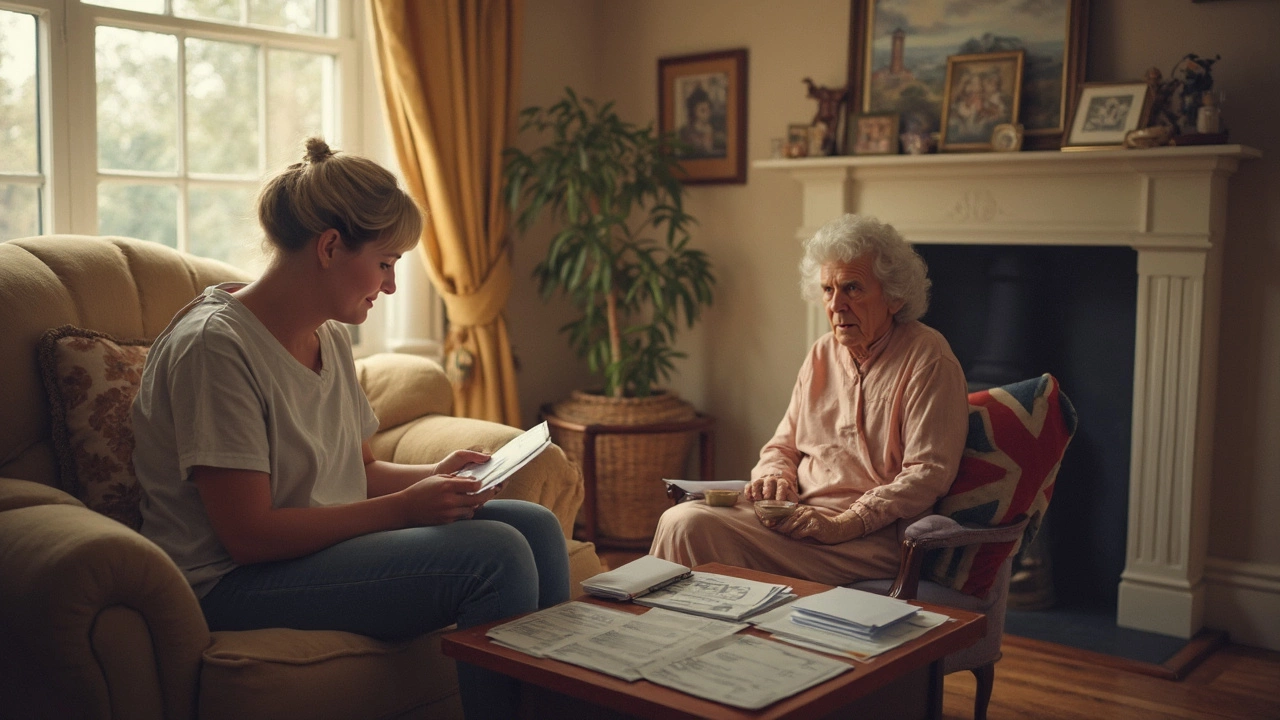Caregiving Made Simple at Home
Whether you’re looking after an aging parent, a recovering relative or anyone who needs extra help, the right home set‑up can make a world of difference. In this guide we’ll cover quick fixes, everyday habits and green choices that keep the house safe and pleasant without breaking the bank.
Easy Home Adjustments for Safe Care
Start by spotting the biggest hazards. A loose rug, a high‑step bathtub or tight doorways can turn routine tasks into risky moves. Lay down non‑slip mats in the bathroom and kitchen, and use double‑sided tape on any rug that slides. A simple grab bar by the toilet or shower adds stability for a few pounds and costs less than a pound of butter.
Next, think about lighting. Bright, even light reduces falls and eases eye strain when reading medicine labels. Replace one‑bulb lamps with LED strips that spread light across the room. They use less power and last longer, which is a win for the planet and your wallet.
Furniture placement matters too. Keep chairs and stools away from walls so you can pull them out without hitting a hard surface. If a bed is too high, use a sturdy step stool or add a low platform under the mattress. The goal is to keep movement smooth and predictable.
Eco‑Friendly Practices for Caregivers
Being a caregiver doesn’t mean you have to ignore sustainability. Swapping disposable wipes for washable cloths cuts waste and saves money. Choose a set of reusable nursing pads, wash them in cold water, and you’ll reduce landfill waste every day.
When it comes to cleaning, natural products are both safe for sensitive skin and better for the environment. Mix white vinegar, water and a few drops of citrus oil for a multi‑purpose spray that works on counters, tiles and bathroom surfaces. It kills germs without harsh chemicals that could irritate breathing.
Meal prep can be a big part of caregiving. Planning simple, plant‑based meals supplies nutrients while lowering the carbon footprint. A batch of lentil soup or roasted veg can be portioned into reusable containers, reheated quickly, and the leftovers stay fresh for days.
Finally, think about energy use. Keep heating and cooling consistent – a smart thermostat can learn the daily schedule and avoid spikes when the house is empty. A few degrees change doesn’t affect comfort but does lower the bill.
These tweaks are easy to add one at a time. You don’t need a complete remodel to make caregiving smoother and greener. Pick the change that feels most urgent, try it for a week, then move on to the next. Small steps add up, and your loved one will notice the difference right away.
Remember, caregiving is about love, patience and practicality. By shaping your home to support those needs, you create a space where everyone can thrive. Keep this guide handy, revisit it whenever you feel stuck, and feel free to share what works for you with other caregivers in the community.
-

Will Medicare Pay for Me to Take Care of My Mother?
People caring for aging parents often wonder if Medicare will pay them for their time and effort. This article uncovers what Medicare does and doesn’t cover when it comes to family caregiving. It sheds light on payment options, specific Medicare rules, and practical tips for families. You’ll also find smart ways to ease the strain, like using comfy cushions to help with long hours of care. This guide keeps it real, focusing on the info you actually need.
